Comparing the language of real estate listings: City vs. Suburb

In the thick of COVID, I finally understood the appeal of suburban living. Outdoor space, room to WFH, fewer opportunities for human contact – it’s a quarantine dream.
When cities shut down, it left many people in the US suddenly questioning their allegiance to city living. If bars and museums and music venues aren’t open, why am I here? And so they left. A decent chunk of them anyway. Enough for moving companies to see spikes in business and increases in rental inventory.
As urbanites flee big cities, we sought to answer the question – are urban and suburban properties being advertised differently? Is this sudden demand for suburban homes and new availability of city apartments seen in the language used by real estate agents?
Using Relative Insight’s language comparison platform, I compared real estate listings for New York City, Chicago, Los Angeles and their respective surrounding suburbs to understand the subtle linguistic differences between city and suburban markets.
New York City vs. Westchester County
Suburban real estate agents understand what potential homeowners value in today’s climate. Listings for homes in Westchester County touted spaces to work from home, as many companies have transitioned to temporary or long-term remote working.
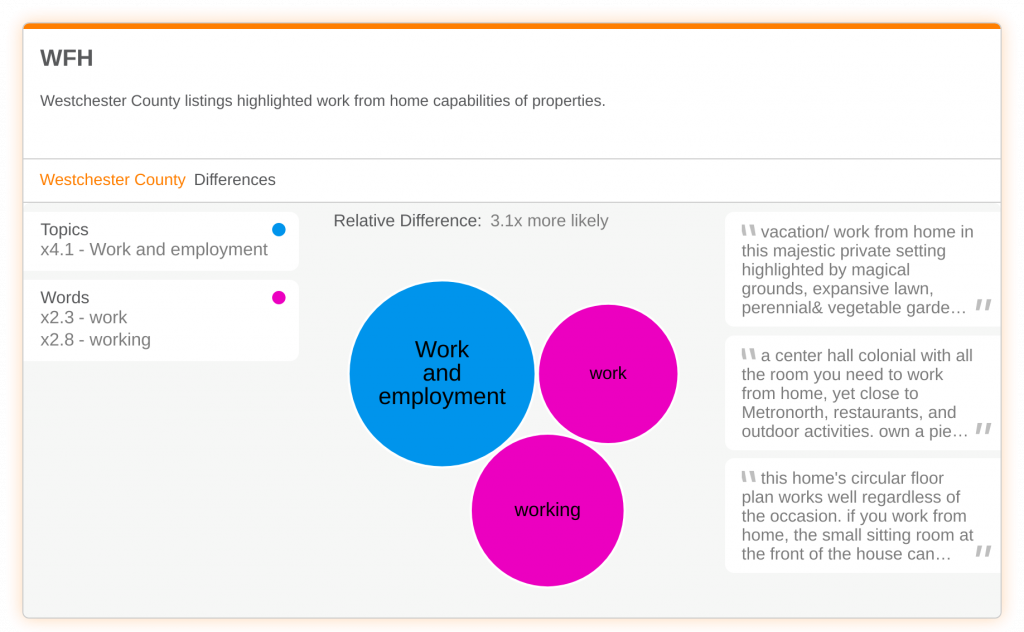
Although the city has changed since pre-COVID days, NYC agents are still relying on the history and prestige of the New York reputation. Listings were more likely to include words like ‘iconic’ or ‘renowned’ in reference to features like the city skyline and building architecture.
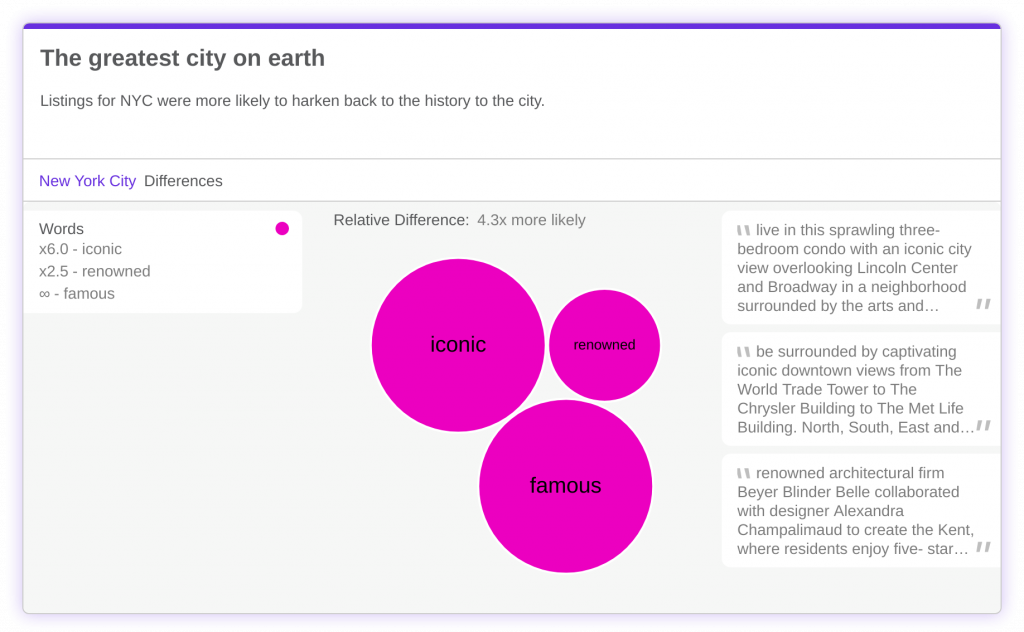
Chicago vs. Lake County
The increase in inventory of Chicago real estate was seen in one word: ‘available’. Listings for properties in Chicago were 3.9x more likely to use the word ‘available’ in phrases such as ‘now available’ and ‘rarely available.’
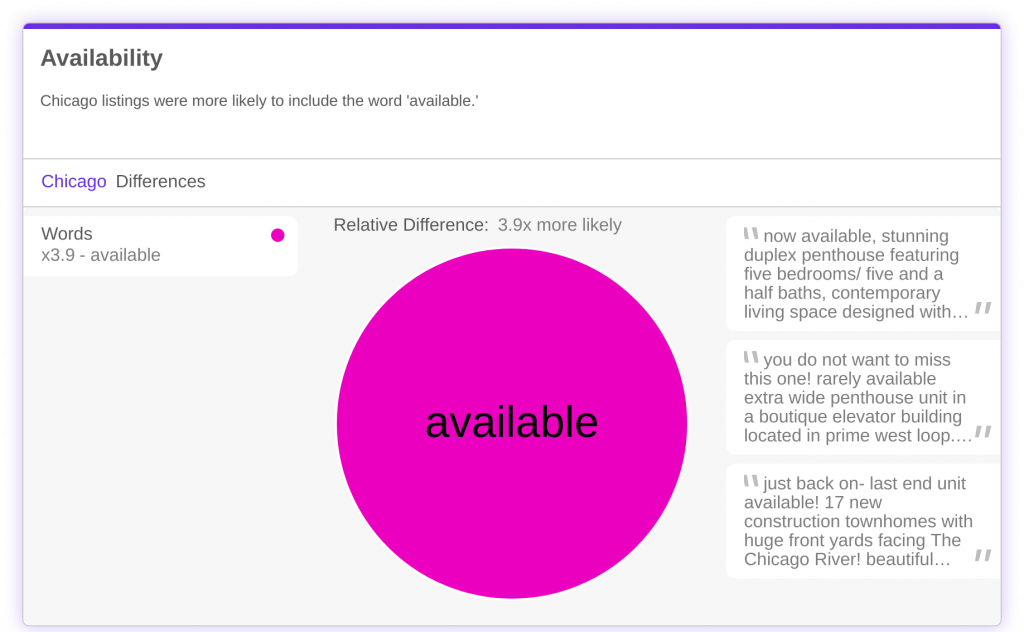
Property listings for Lake County, just north of Chicago, emphasized that the home should be a safe space, and they were more likely to use the word ‘enjoy’ when describing the potential of the property. Agents asked potential buyers to imagine ‘enjoying’ a home gym, expansive windows or “a carefree life away from the worries of the city.” They clearly know their audience.
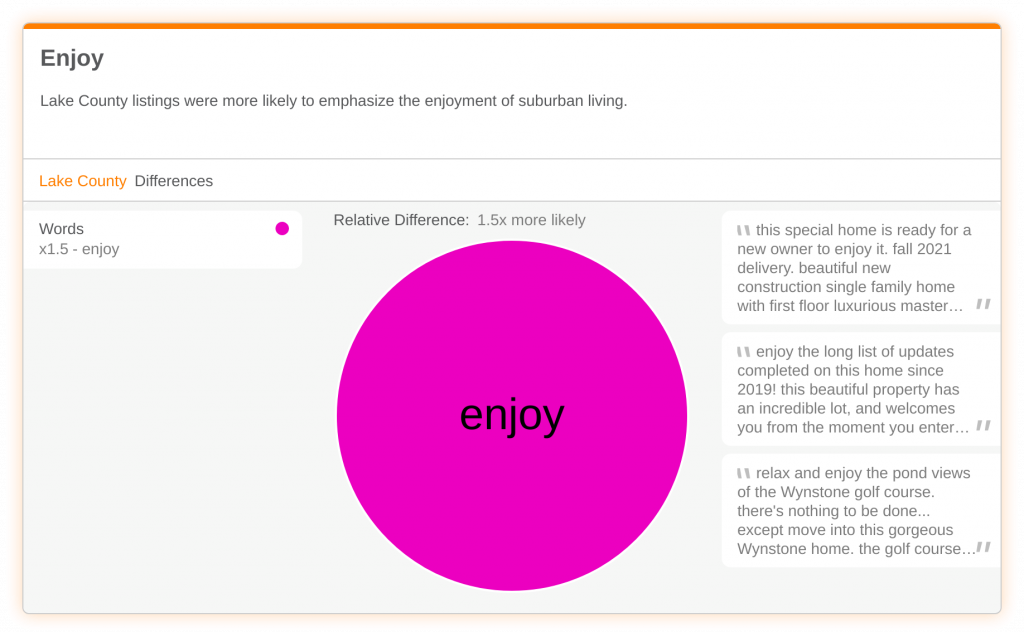
Los Angeles vs. Orange County
Listings for Los Angeles painted city living as more than just a piece of property – it’s an experience. LA listings were 6.8x more likely to use the word ‘experience’ when describing the home’s features.

Orange County agents talked about how the past few months haven’t exactly been easy for most. To target those looking for a break, they highlighted the ease and convenience of suburban living.
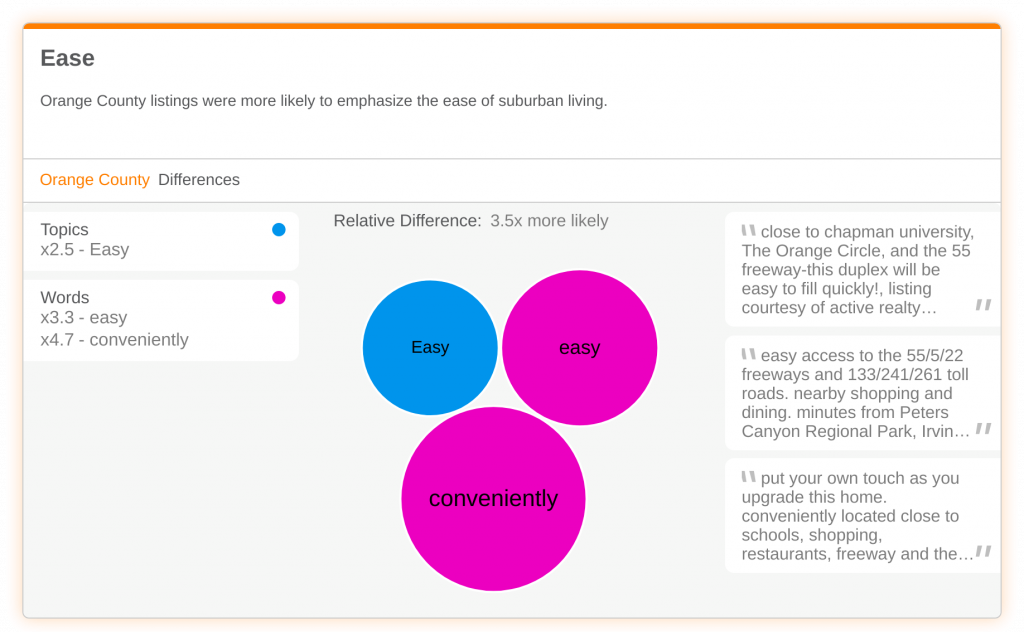
City vs. Suburb
One common trend among all the suburban listings was the use of the word ‘you.’ Agents were more likely to use the pronoun in an attempt to create inclusive listings and target individual buyers.
All of the suburbs analyzed also featured references to families, backyards, property size and the use of the word ‘home.’
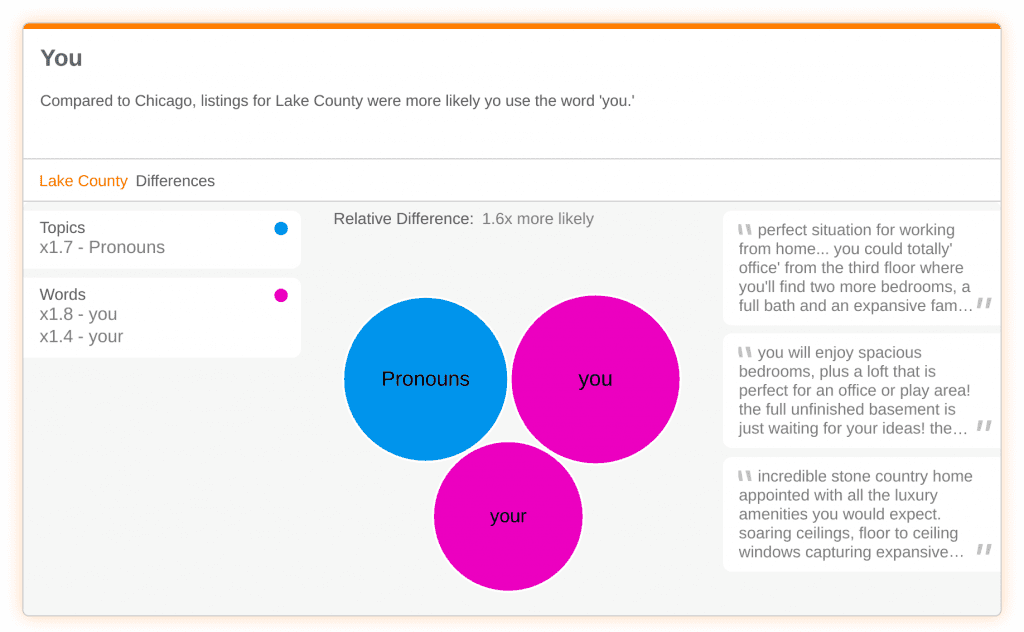

Urban listings catered to the type of potential customer looking to buy within a big city. They were more likely to highlight impressive views, places to store your wine and exact brand names of products and appliances within the space.
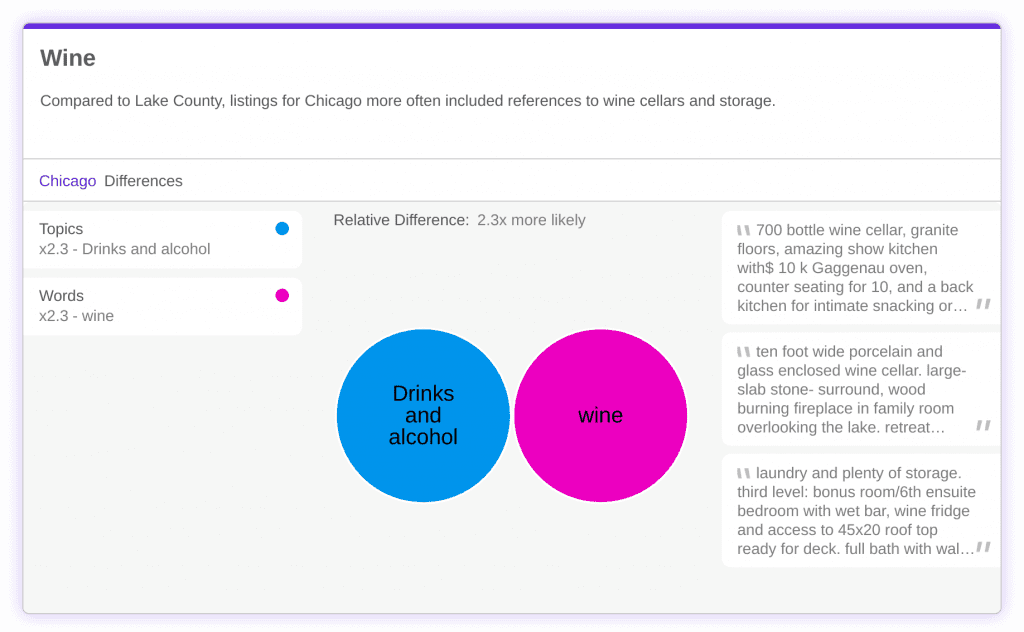
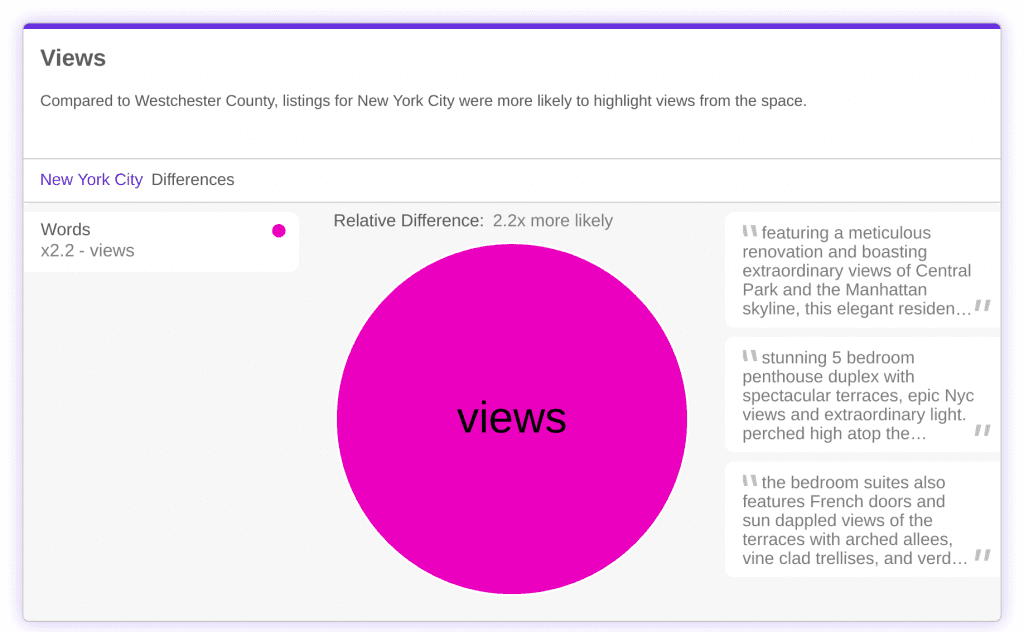
Relative Insight is here to analyze your unused data. From web copy to social listening data to transcripts – we can help you get closer to your audience.
Contact us using the form below, and we’ll show you how.